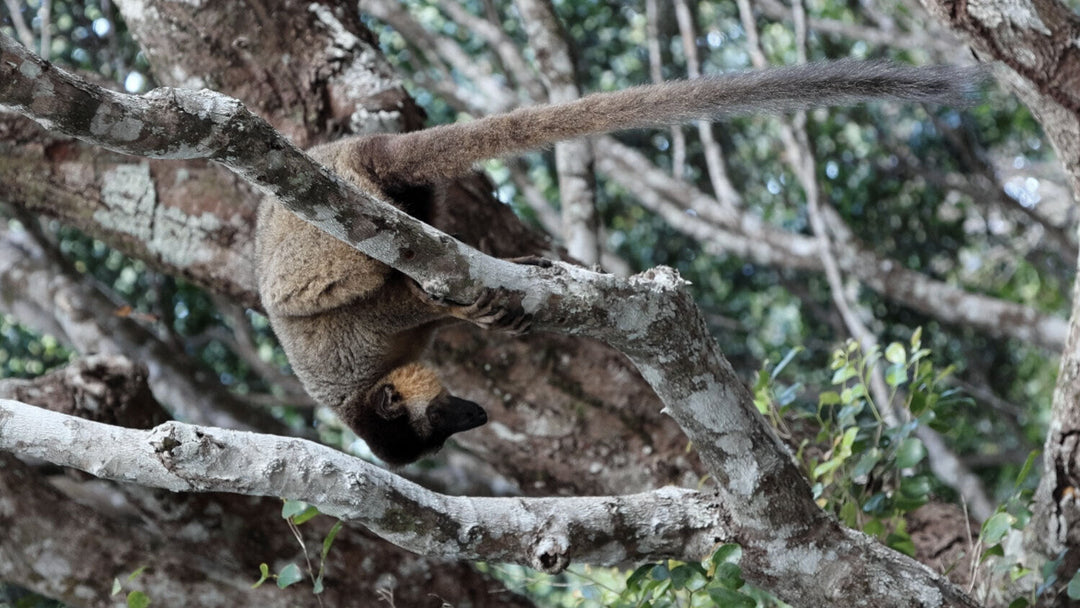Wildlife climbing wins (and fails) caught on trail cameras
Our trail cameras have captured some fascinating moments of wildlife climbing in their natural habitats.
From red squirrels to badgers, pine martens, stoats, red foxes, and wood mice, these animals showcase their unique climbing abilities in this video and blog…
Trail cameras are a popular tool for wildlife enthusiasts and photographers to capture images and videos of animals in their natural habitats. One of the most fascinating aspects of this technology is the ability to observe and document animal behaviour, including impressive (and not so impressive) climbing abilities of different species. In this blog post, we share some of the best and most amusing moments of wildlife climbing captured on trail cameras, featuring footage from projects that NatureSpy works with in Scotland and England: the Yorkshire Pine Marten Project, Aigas Field Centre and Alladale Wilderness Reserve.
Red Squirrels
Red squirrels are known for their excellent climbing abilities. They are able to navigate tree branches and trunks with ease, using their sharp claws to grip onto surfaces and their long tails for balance. In fact, their climbing skills are essential to their survival, as they spend much of their time in trees searching for food and evading predators. Red squirrels are also capable of impressive acrobatic feats, such as leaping from branch to branch or hanging upside down while feeding.
Badgers
Badgers are not typically thought of as being skilled climbers, as they are better known for their digging abilities. However, some trail camera footage has captured badgers climbing up fences and even trees. While badgers may not be as agile as some other animals, they do have strong claws that allow them to grip onto surfaces and pull themselves up. So while they may not be experts at climbing, they are certainly capable of scaling certain obstacles when needed.
Pine martens
Pine martens are skilled climbers. They are able to navigate trees and obstacles in their environment with ease, using their strong grip to cling onto surfaces and pull themselves up. Their hind paws even rotate, enabling them to maintain control when climbing downwards. They are also able to jump from tree to tree, similar to squirrels. Pine martens are adapted to living in forested areas, where they spend much of their time climbing and moving between trees to search for food. Their climbing skills are an important aspect of their behaviour and allow them to thrive in their natural habitat.
Stoats
Stoats are capable climbers and are known for their agility and quick movements. They are able to navigate trees, shrubs and walls with ease - well, most of the time as you'll see in the video above! Their climbing abilities are important for hunting and avoiding predators, as they are able to move quickly and stealthily through their environment.
Red foxes
Red foxes are generally not considered to be good climbers, as they are better adapted to life on the ground. However, they are capable of some level of climbing and can navigate obstacles if necessary. Red foxes are better known for their running and jumping abilities, which they use for hunting and evading predators. While they may not be expert climbers, their adaptability and versatility allow them to thrive in a variety of environments.
Wood mice
Wood mice are capable climbers, but they are not as skilled as some other rodents like squirrels or rats. They are able to climb trees and vegetation to some extent, but their short legs make climbing a challenge. Wood mice are more adapted to living on the ground and in low vegetation, where they forage for food and build their nests. They are also known for their excellent burrowing abilities, which they use to create underground tunnels and chambers for protection and shelter. While they may not be the most adept climbers, wood mice are well adapted to their natural environment and use a variety of skills to survive.



